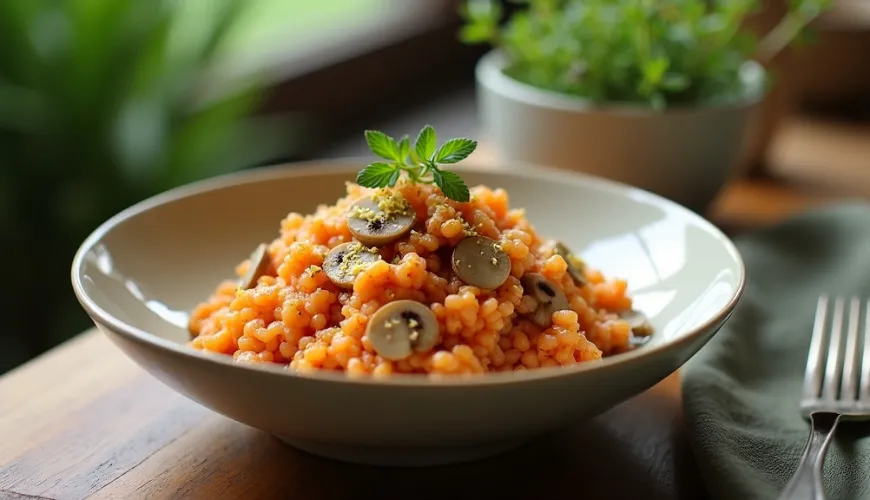
How to Easily Start with Low Carb for Beginners and What to Eat

Low Carb Diet Guide for Beginners
Eating with reduced carbohydrate intake, known as the low carb diet, has been gaining more popularity in recent years. It's no surprise. Many people report weight loss, increased energy levels, and improved overall health after switching to this style of eating. However, if you're just getting acquainted with this lifestyle, it's understandable that you might feel a bit lost at first. What exactly does "low carb" mean? How many carbohydrates are considered "low"? And what should you eat instead of your favorite pasta, bread, or potatoes?
This article is all about that – a simple and comprehensive guide to low carb for beginners, supplemented with real-life tips and inspiring recipes that show that meals can be tasty, filling, and diverse even without bread and sugar.
What Does It Mean to Eat "Low Carb"?
The term "low carb" literally means "low in carbohydrates." It's not about a strict ban on all carbohydrate foods but rather about making conscious choices of the right ones. The goal is to significantly reduce the consumption of simple sugars and refined carbohydrates – typically sweets, white bread, sweetened drinks, and pasta – and replace them with foods higher in protein, healthy fats, and fiber.
Generally, it is recommended to consume up to 100 grams of carbohydrates per day, and in stricter versions of the low carb diet, it can be less than 50 grams. For comparison: a typical slice of bread contains around 15 to 20 grams of carbohydrates, and a banana approximately 25 grams. As you can see, even such common foods can quickly fill the daily limit.
But that doesn't mean you have to give up delicious food. On the contrary – a low carb menu can be surprisingly varied and full of flavors. The key is learning to distinguish between carbohydrates that are harmful and those that are beneficial to the body. Vegetables, legumes in moderation, seeds, and nuts are examples of healthy sources of carbohydrates.
Why Do People Choose Low Carb?
Everyone has a different motivation. Some want to lose weight, others to get rid of fatigue, and some are looking for a way to stabilize their blood sugar levels. The low carb diet has a range of benefits, confirmed by scientific studies. According to a review published in the The New England Journal of Medicine, diets with lower carbohydrate intake lead to faster weight loss than traditional low-fat diets.
Additionally, reduced sugar intake can help people with prediabetes or type 2 diabetes. Stable blood sugar levels mean fewer mood swings, less craving for sweets, and more energy throughout the day.
The experience of Ms. Jana from Brno, who switched to a low carb lifestyle after years of unsuccessful weight loss attempts, shows how effective this change can be: "At first, I didn't believe I could do it without bread and pastries. But after a week, my cravings for sweets disappeared, and I had more energy than ever before. I lost ten kilos in three months and feel great."
Where to Start? Low Carb Diet Principles
For beginners, it can be helpful to follow some basic rules:
- Focus on fresh, whole foods: vegetables, quality meat, fish, eggs, nuts, seeds.
- Limit sweets, bread, pasta, rice, and potatoes – the classic sources of quick sugars.
- Use healthy fats: olive oil, avocado, coconut oil, butter from grass-fed cows.
- Include enough fiber through leafy greens and seeds.
- Don't forget to stay hydrated, ideally with plain water, herbal teas, or unsweetened coffee.
At the beginning, it is good to keep a simple journal or app where you record what you eat. It helps to keep track of carbohydrate intake and quickly detect hidden sugars in foods where you wouldn't expect them. For example, ketchup, yogurt, or even ham can contain relatively high amounts of added sugar.
Recipes for Beginners
One common myth is that low carb means spending hours in the kitchen. The truth is quite the opposite. Many recipes are quick, simple, and don't require any special ingredients. Over time, you will learn to replace common sides like rice or pasta with healthier alternatives.
Here are some inspirations for low carb recipes for beginners that anyone can handle:
1. Cauliflower "Rice" with Chicken
Grate cauliflower and briefly sauté it on a teaspoon of butter, season with salt and spices. Meanwhile, sauté chicken breasts in olive oil, add a bit of garlic, and optionally some vegetables of your choice (e.g., broccoli or zucchini). The result? A delicious lunch without traditional rice that will pleasantly fill you up.
2. Egg Muffins with Spinach
Crack eggs into muffin molds, add chopped fresh spinach, a bit of cheese, and herbs. Bake for about 15 minutes at 180°C. A great snack or breakfast that can be prepared in advance.
3. Vegetable Noodles with Pesto
Using a spiralizer (or peeler), create "noodles" from zucchini or carrots. Briefly sauté them in a pan and mix with homemade pesto made from basil, olive oil, and Parmesan. The dish is light, fresh, and ready in a few minutes.
What to Watch Out For and What to Avoid
The transition to a new diet can be accompanied by the so-called "low carb flu" – a temporary period of fatigue, headaches, or irritability that usually disappears within a few days. It's a normal reaction of the body to reduced carbohydrate intake and metabolism change. It helps to drink enough fluids, replenish electrolytes (e.g., salt, magnesium), and not be afraid of quality fats that provide energy.
A common mistake beginners make is excessive restriction – trying to eat as few calories as possible while also avoiding fats. The result is hunger, irritability, and a quick abandonment of the diet. Low carb is not about starving. On the contrary, the key is to eat to satiety and choose whole foods that satiate the body and provide nutrients.
Is Low Carb for Everyone?
While a diet with lower carbohydrate content can be beneficial for most people, there are exceptions. For example, pregnant women, nursing mothers, or individuals with certain medical conditions should consult a doctor before changing their diet. Likewise, people engaged in intensive performance sports may need higher carbohydrate intake at certain times of the day.
However, for most normally active people, low carb eating is a safe and effective way to a healthier lifestyle. It's not about the numbers on the scale but how you feel – full, energized, and without mood swings.
As well-known nutrition expert Mark Hyman says: "Food is not just calories. It's information. Every bite affects our hormones, metabolism, mood, and health." And that's exactly what the path to low carb is about – learning to listen to your own body and finding a balance that will be sustainable in the long run.
Eating with lower carbohydrate content is not a diet in the traditional sense. It is a lifestyle that emphasizes food quality, simplicity, and healthy habits. And if you start slowly, with an open mind and patience, this change can be not only beneficial but also joyful.

